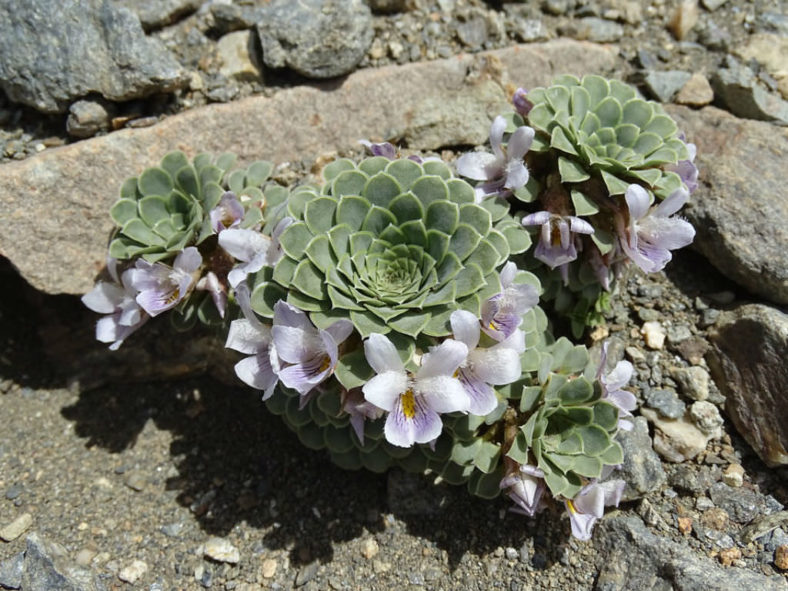Viola is the largest genus in the Violet family, containing between 525 and 600 annual or perennial plants and a few small shrubs. They are widely distributed over both the Northern and Southern temperate zones. There are also a handful of shrubby species in the Andes, the Sandwich Islands, and Eastern Europe.
The genus was first formally described by Carl Linnaeus in 1753 with 19 species. The type species of the genus is Viola odorata. The generic name "Viola" derives from the Ancient Greek "ion," meaning "violet."
Because Violas hybridize freely, identification of the species is often difficult. Flowers are variable in color but not red, and usually grow solitary on a stalk. They have five petals, four arranged in unlike pairs, the fifth with a spur. In stemmed Violas, leaves may develop on the same stem as the flower, while in stemless Violas, they grow on separate stems. The best-known Violas usually have heart-shaped leaves, but the leaves of other species may have different shapes.
All species bloom early in the spring, but some cultivars or hybrids bloom later in the season. Many species have two types of flowers. One type is showy and appears in the spring, but often does not produce seeds in some species. The fertile, less conspicuous flowers appear in early summer and are completely closed, self-fertilizing.
The species from the high Andes of South America are known as Rosulate Violas or Andinium Violas. They are Violas in which the leaves form a tight rosette, like Sempervivum or some of the Saxifrages. There are two main groups. The species that belong to the Cotyledon Group are hard-leaved, perennial plants that typically live for about 15 years. The species that belong to the Volcanica Group are soft-leaved annuals or short-lived perennials. Flowers appear at the leaf level in rings around the outside of the rosette.

Growing Conditions for Rosulate Violas
Violas wildly grow in damp woods or meadows. The small, hardy species grow well in the rock garden, and others require sharp drainage or a humus-rich soil mix with high moisture retention. Yet others need an alpine house protection from hard frost and wet conditions in winter. Most species like partial shade and moist but well-draining soil.
Rosulate Violas are mainly found in Chile and Argentina and grow in relatively bare, loose, often volcanic soils. Like many plants in such countries, they have a long taproot to ensure access to water.
These plants are cold-hardy down to USDA hardiness zone 7a, with a minimum temperature of 0°F (-17.8°C).
General Care for Rosulate Violas
Rosulate Violas are known for being difficult to keep alive, but some species can be grown by experienced growers. Magnificent specimens of Viola dasyphylla and Viola cotyledon appear regularly on the show bench.
The primary issue with Rosulate Violas is etiolation, which occurs due to a lack of light, resulting in the elongation of the compact rosettes. Cold conditions, soil containing adequate nutrients, and as much light as possible are essential. It is known that in any bunch of seedlings, some will quickly etiolate while others may not. Therefore, there is some scope in selecting Rosulate Violas that are more likely to grow satisfactorily in cultivation.
How to Propagate Rosulate Violas
Rosulate Violas are grown only from seed and with some patience.
Toxicity of Rosulate Violas
Violas are nontoxic for humans and pets. Both the flowers and leaves are edible, fresh, cooked, or dried.
Links
- Back to genus Viola
- Succupedia: Browse succulents by Scientific Name, Common Name, Genus, Family, USDA Hardiness Zone, Origin, or cacti by Genus